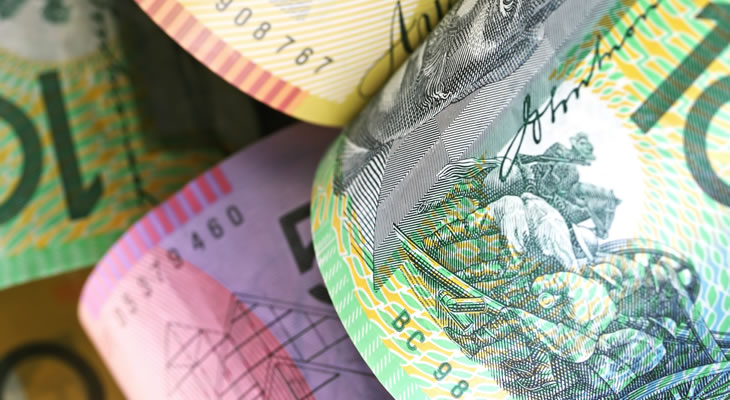Pound to Australian Dollar Exchange Rate Kept Lower by Stronger Australian Job Data
The Pound to Australian Dollar (GBP/AUD) exchange rate’s volatile streak continues, as the pair once again fell today following yesterday’s jump. The latest movement was caused by stronger than expected Australian data, pushing the Australian Dollar (AUD) higher.
Since opening this week at the level of 1.7717, GBP/AUD has been fluctuating between this level and highs of near 1.7916.
Yesterday GBP/AUD jumped to near those highs once again on market risk-aversion, but this morning the pair shed most of those gains due to the Australian Dollar’s own strength.
At the time of writing, GBP/AUD was struggling to advance and trended near the level of 1.7790.
Pound (GBP) Exchange Rates Strengthen on Bank of England (BoE) Speculation
Following weeks of poor performance on worsening no-deal Brexit fears, the Pound (GBP) finally found more supportive ground to trade on yesterday as Britain’s July inflation rate was published.
UK inflation came in higher than forecast in most prints. The yearly figure unexpectedly rose above the Bank of England’s (BoE) 2.0% target, to 2.1%.
As inflation rose above target rather than slowing, the Pound benefitted from doused BoE interest rate cut speculation.
Fears that the BoE could cut UK interest rates within the foreseeable future fell, with some arguing that a rate hike was actually more likely instead.
Sterling found further support this morning. Retail sales results beat expectations in July, which slightly doused fears that Britain could be headed for a recession.
Australian Dollar (AUD) Exchange Rates Gain on Solid Job Outlook but Trade Jitters Persist
The Australian Dollar has seen broad fluctuations this week, tumbling and rising almost every day on domestic economic factors and global geopolitical news.
As a currency correlated to trade and news from China, the Australian Dollar slumped yesterday when the latest Chinese retail sales data disappointed. Market optimism about a US-China trade tariff delay has also faded.
However, overnight the Australian Dollar saw yet another rebound in demand as investors reacted to Australia’s July job market report.
Following some stronger than expected Australian wage data in the middle of the week, this morning’s Australian employment change print beat expectations. The unemployment rate also remained low at 5.2%, despite the participation rate unexpectedly rising.
Still, Australia’s economic outlook remains uncertain due to the potential impact of a US-China trade war, so AUD gains were limited.
Pound to Australian Dollar (GBP/AUD) Exchange Rate Await Geopolitical Developments
As this week’s most notable ecostats have been published already and next week’s economic calendar is quiet, the Pound to Australian Dollar (GBP/AUD) will be influenced more by political and geopolitical developments over the next week.
Any surprising news in Brexit or UK politics will influence the Pound’s movement over the coming days. With US-China trade tensions still hitting headlines this week, developments here could influence the trade-correlated Australian Dollar.
Looking ahead to next week, the Reserve Bank of Australia’s (RBA) meeting minutes on Tuesday could influence AUD movement if the bank’s tone on monetary policy plans surprise investors.
Other data for GBP/AUD investors to watch out for includes UK industrial trends orders and distributive trades data from CBI. Australian PMI projections from CommBank, and Australian construction stats will be published too.
As August heads into its second half though, UK politics and Brexit are likely to slowly return to focus and dominate the Pound to Australian Dollar (GBP/AUD) exchange rate outlook.


Comments are closed.